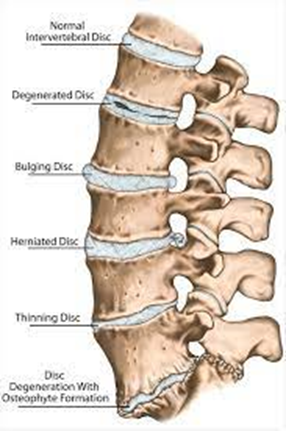A nurse is caring for a client who has degenerative disc disease and has been diagnosed with cauda equine syndrome. Which of the following would be an expected finding with this condition?
Paralytic lleus
Blood pressure 80/48 mm Hg
Weakness in one or both legs
Potassium 3.2 mEq/L
The Correct Answer is C
Choice A Reason:
Paralytic ileus is incorrect. Paralytic ileus is a condition characterized by obstruction of the intestines due to paralysis of the intestinal muscles, resulting in symptoms such as abdominal pain, bloating, and constipation. Paralytic ileus is not typically associated with cauda equina syndrome, which primarily affects the nerves in the lower back and lower extremities.
Choice B Reason:
Blood pressure 80/48 mm Hg is incorrect. While cauda equina syndrome can cause neurological symptoms such as lower extremity weakness, numbness, and bowel or bladder dysfunction, it is not typically associated with alterations in blood pressure. Blood pressure changes may occur in response to pain or other systemic factors, but they are not specific to cauda equina syndrome.
Choice C Reason:
Weakness in one or both legs is correct. Yes, weakness in one or both legs is a characteristic finding of cauda equina syndrome. Compression of the nerve roots in the lower spinal cord can lead to motor deficits, including weakness, difficulty walking, and loss of reflexes in the lower extremities.
Choice D Reason:
Potassium 3.2 mEq/L is incorrect. Serum potassium levels are not typically associated with cauda equina syndrome. Abnormal potassium levels may be indicative of electrolyte imbalances, which can occur in various medical conditions but are not specific to cauda equina syndrome.

Nursing Test Bank
Naxlex Comprehensive Predictor Exams
Related Questions
Correct Answer is ["A","B","D","E"]
Explanation
Choice A Reason:
Memory loss is correct. Memory loss can occur in individuals with PML due to damage to the white matter of the brain caused by the JC virus infection. This damage can affect cognitive function, including memory.
Choice B Reason:
Clumsiness is correct. Clumsiness or lack of coordination is a common neurological symptom of PML. It can result from damage to areas of the brain responsible for motor function and coordination.
Choice C Reason:
Tardive dyskinesia is incorrect. Tardive dyskinesia is a movement disorder characterized by involuntary, repetitive movements, often involving the face, lips, tongue, and limbs. While tardive dyskinesia can occur as a side effect of certain medications, it is not typically associated with PML.
Choice D Reason:
Seizures is correct. Seizures can occur in individuals with PML due to the involvement of the brain's white matter by the JC virus infection. Seizures may present as sudden, uncontrolled movements, altered consciousness, or other neurological symptoms.
Choice E Reason:
Vision difficulty is correct. Vision difficulties, including blurred vision, visual field deficits, and other visual disturbances, are common manifestations of PML. Damage to the optic nerves or areas of the brain involved in visual processing can result in vision difficulties.
Correct Answer is A
Explanation
Choice A Reason:
Vasogenic cerebral edema is appropriate response. Vasogenic cerebral edema occurs due to disruption of the blood-brain barrier (BBB), leading to leakage of fluid and proteins from the blood vessels into the brain parenchyma. This type of cerebral edema is commonly associated with conditions such as brain tumors, abscesses, and ischemic stroke.
Choice B Reason:
Osmotic cerebral edema is inappropriate response. Osmotic cerebral edema occurs when there is an imbalance of osmotic forces across the blood-brain barrier, leading to the movement of water into the brain cells. This type of cerebral edema can result from conditions such as hyponatremia or the administration of hypertonic solutions.
Choice C Reason:
Cellular cerebral edema is inappropriate response. Cellular cerebral edema involves the swelling of brain cells (neurons and glial cells) due to various insults, such as ischemia, hypoxia, or metabolic disturbances. This type of cerebral edema can occur in conditions such as ischemic stroke or traumatic brain injury.
Choice D Reason:
Interstitial cerebral edema is incorrect response. Interstitial cerebral edema involves the accumulation of fluid within the interstitial spaces of the brain tissue. This type of cerebral edema can occur in conditions such as hydrocephalus, where there is obstruction of cerebrospinal fluid (CSF) flow.
Whether you are a student looking to ace your exams or a practicing nurse seeking to enhance your expertise , our nursing education contents will empower you with the confidence and competence to make a difference in the lives of patients and become a respected leader in the healthcare field.
Visit Naxlex, invest in your future and unlock endless possibilities with our unparalleled nursing education contents today
Report Wrong Answer on the Current Question
Do you disagree with the answer? If yes, what is your expected answer? Explain.
Kindly be descriptive with the issue you are facing.
